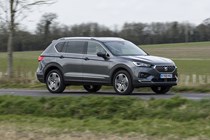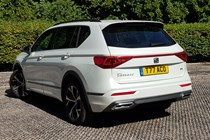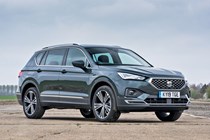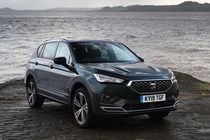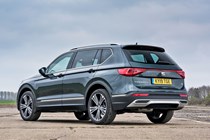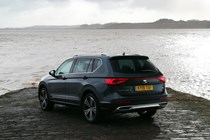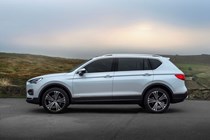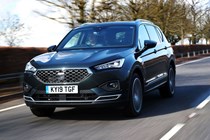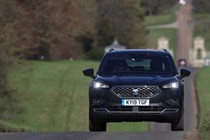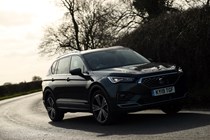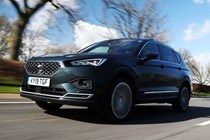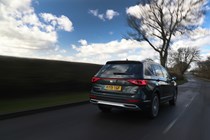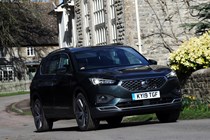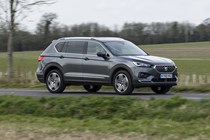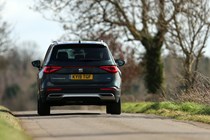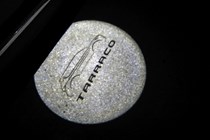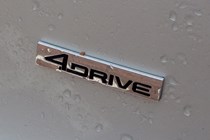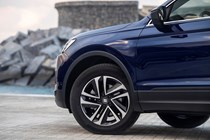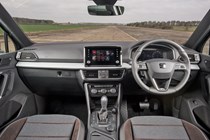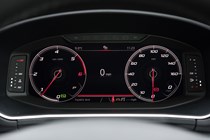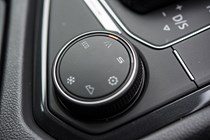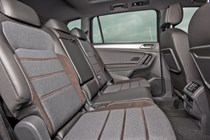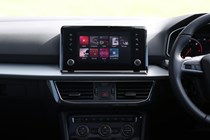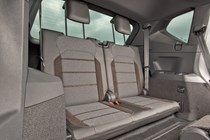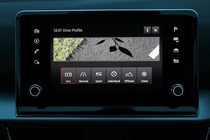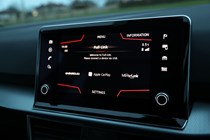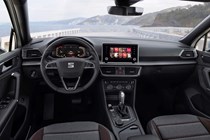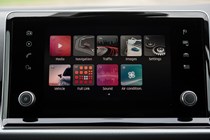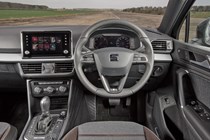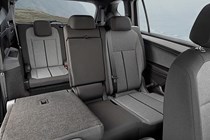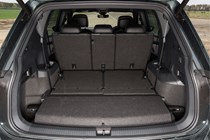
SEAT Tarraco engines, drive and performance
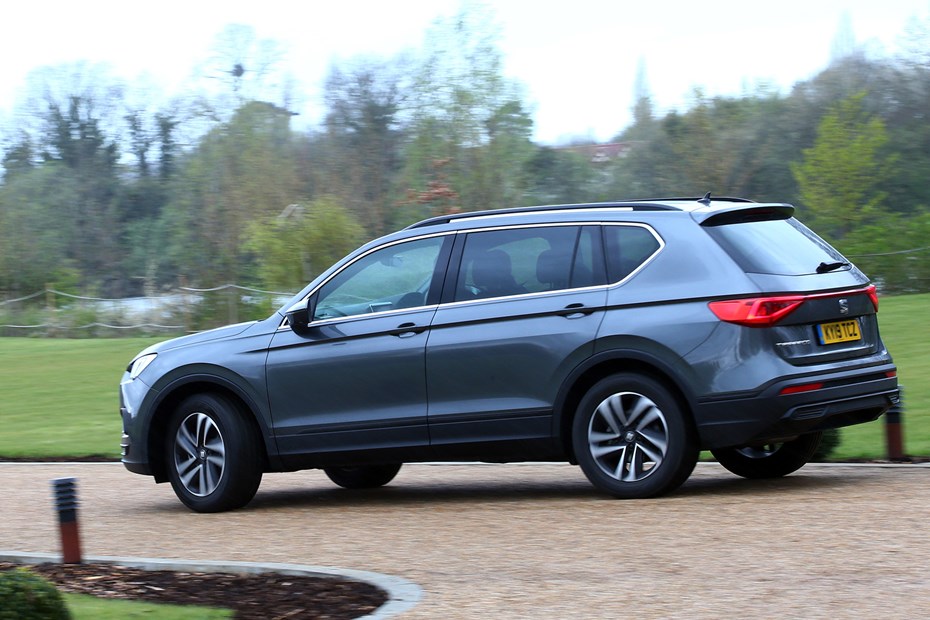
- Petrol and diesel engines only – no hybrids
- A choice of manual or DSG transmission
- Four-wheel drive is available (but unnecessary for most)
This SEAT Tarraco was available with a choice of three petrol and two diesel engines.
Petrol engines
Petrol Tarraco buyers get the choice of a 150hp 1.5-litre TSI turbo petrol or a more muscular 2.0-litre TSI turbo petrol. The latter was mostly sold in 190hp guise, though a few 245hp models made it to the UK as well.
The 1.5-litre was the most popular, delivering a typically smooth and refined performance. It goes better than we had feared, given the size of the vehicle, but we certainly missed the extra torque (pulling power) available from the diesel models.
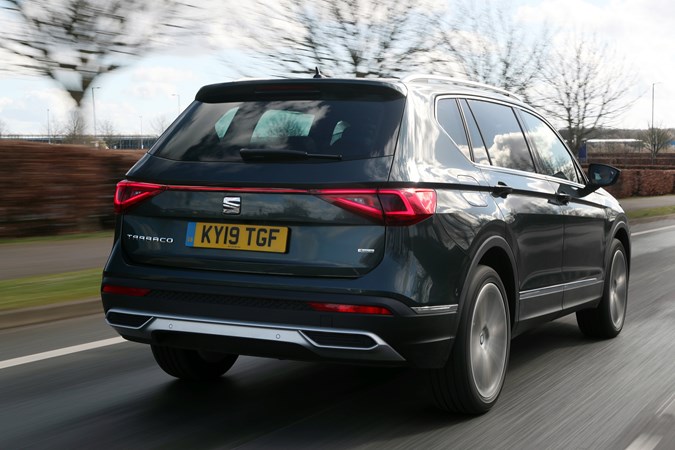
Having done 1,000 miles in week in one of these, we found that lack of oomph does become a bit of a chore. It’s also compounded by the relatively lazy DSG automatic transmission, which is sluggish to respond in Eco mode and a little too eager to drop gears in Sport. Making it either too relaxed or not relaxing enough.
There’s stronger performance from the 190hp and 245hp petrols. However, the lower-powered 2.0-litre version is also noticeably down on low-end shove when loaded up with passengers, and also suffers from some DSG sluggishness.
The sportiest 245hp model makes lighter work of this, but we did still have to work it quite hard to get truly rapid performance. Which seems rather at odds with the point of a family SUV, and isn’t great for the fuel economy, either.
You can find full engine and performance details on our SEAT Tarraco specs page.
Diesel engines
The diesels available in the Tarraco are 2.0-litre TDI turbo units similar to those fitted in vast numbers of other VW Group cars. There’s a choice of 150hp or 200hp.
Go for the 150hp version and you can pick between a manual gearbox with front-wheel drive or seven-speed DSG automatic with 4Drive all-wheel drive. The manual gearbox is particularly slick and easy to use, and this version of the Tarraco has strong overtaking performance, as long as you’re in the right gear.
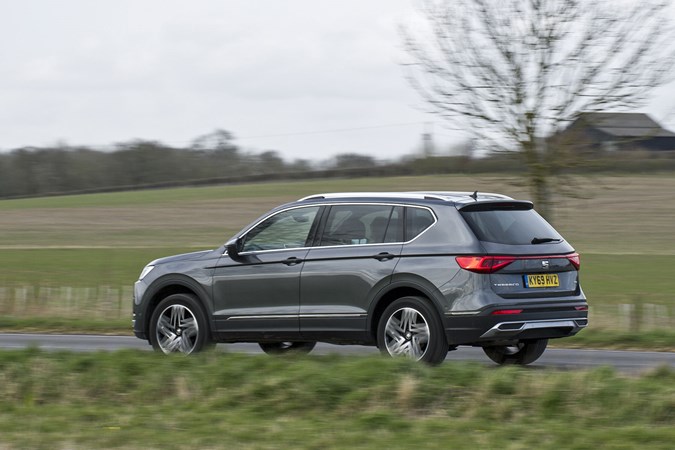
The 200hp 2.0-litre TDI is comes exclusively with 4Drive and the seven-speed DSG transmission. As is typical, the DSG can feel very sluggish when pulling away from junctions or at roundabouts, needing a good prod of the throttle to get the car moving. This can then sometimes result in too much acceleration, which is somewhat annoying.
Get it right, though, and the performance is just about spot-on for a family SUV of this size. You get good long distance fuel economy, too, as we’ll cover on the next page.
Handling
- Firmer chassis than similar Skoda Kodiaq
- Body control is impressive for something so large
- No adaptive suspension, but you don’t need it
The Tarraco’s been set-up to feel more engaging to drive than its closest seven-seater rivals, with steering and suspension tailored to the Spanish brand’s zesty ethos. If you enjoy driving on B-roads but need a big SUV it does a solid job of keeping you entertained without ruining your passengers’ comfort.
The Tarraco’s steering turns into corners sharply, with a decent amount of communication about what the front wheels are up to – although its weighting is on the light side, even in the Sport setting. Similarly, bodyroll is kept tidily in check, in part because the suspension’s 20mm lower than the Kodiaq’s, reducing the centre of gravity compared with that closely related Skoda.
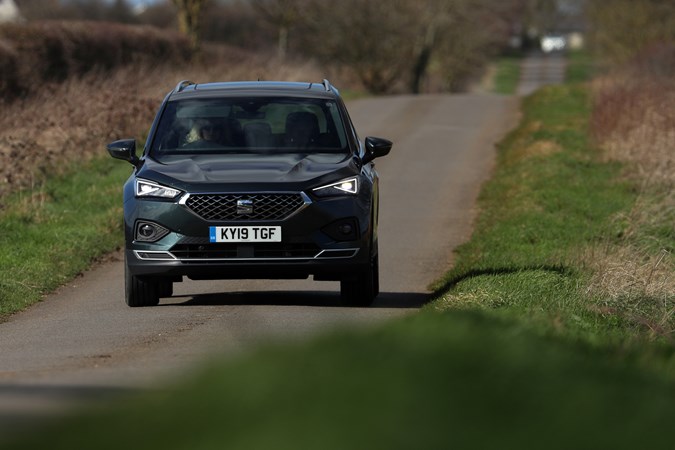
It’s best to think of the Tarraco as being an SUV for keen drivers – at least compared with the Volkswagen and Skoda – rather than a sporty car that happens to have seven seats. Certainly in FR trim with the larger wheels and lower-profile tyres offered as standard, it feels very quick and responsive in the the bends.
While this is all well and good in terms of feeling assured and responsive for such a large car on a smooth, twisting road, the combination of 20-inch alloy wheels on higher-spec models and less-than-perfect surfaces of UK roads means the Tarraco can tend to fidget and fuss more than we’d like.
It’s never uncomfortable – far from it – but it’s worth trying the equivalent Skoda Kodiaq and Volkswagen Tiguan Allspace for comparison if your priority is outright comfort.


